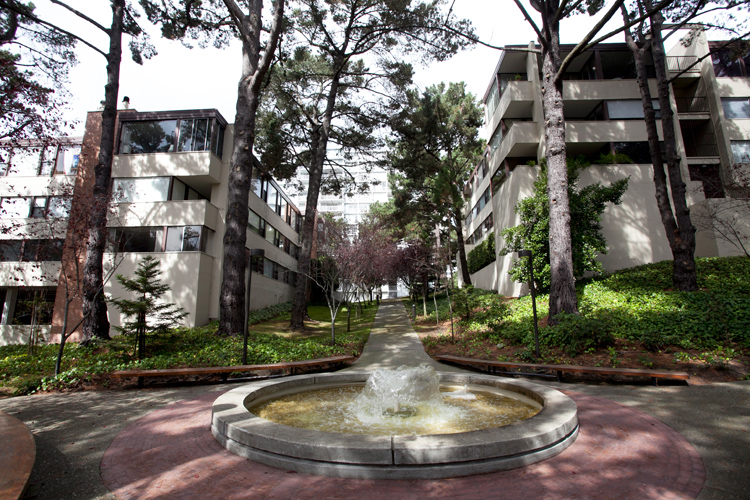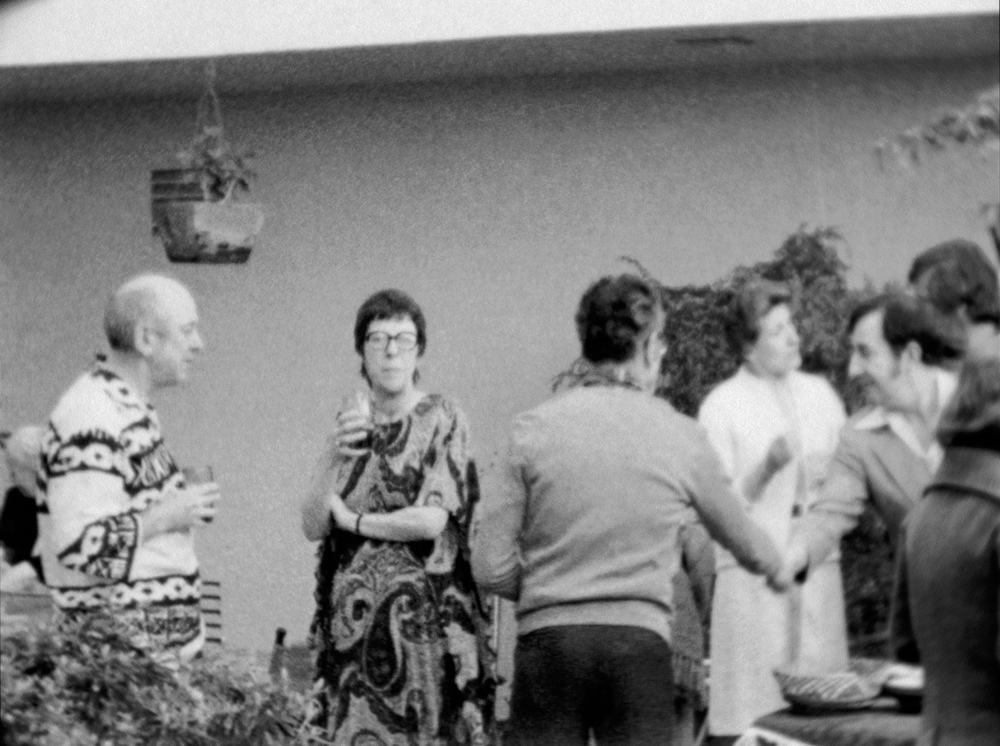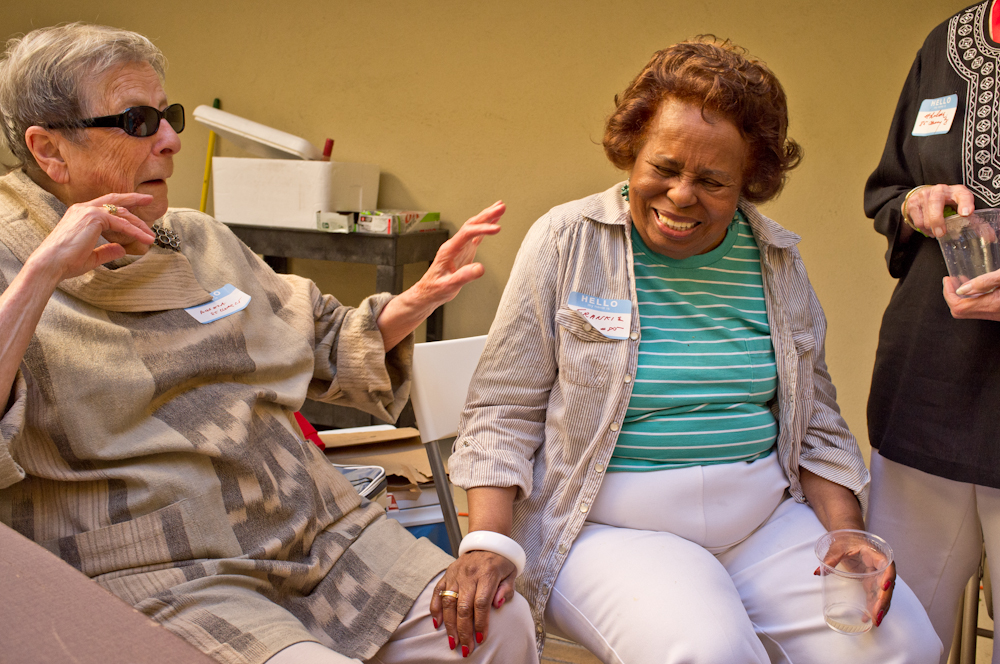Five Decades Later, an Inner-City Eichler Village Thrives
 |
|
|
A very special Eichler development celebrates its 50th anniversary this year: Laguna Heights, in San Francisco's Cathedral Hill neighborhood, is one of Joe Eichler's few inner-city tracts. The cluster of low-rise co-op apartment buildings called Laguna Heights opened in 1963 as part of the city's redevelopment of the neighborhood, followed shortly by the high-rise Laguna Tower. The Eichler network explored the development in depth in our feature City on a Hill.
On June 22, Laguna Heights residents gathered for a celebration organized by Colleen Mullins, a part-time resident who was just 2 when she arrived in 1968. At the party, Mullins shot a photo of a 93-year-old resident named Angela Little, a professor emeritus at U.C. Berkeley who moved into the complex in 1972 (scroll to the bottom for that one). It's an especially fun shot because it juxtaposes with this 41-year-old photo of Little taken shortly after she moved in:
 |
| ©1972 Clement Mullins |
Enchanted by these two photos taken 41 years apart, I called Little to ask how this unique Eichler development, and the neighborhood surrounding it, has changed over the years. What follows is an edited version of that conversation.
That's a fantastic photo of you as a new co-op resident. How did you come to be one?
I was a professor at UC Berkeley and my husband was a CPA in San Francisco so he was commuting. We raised a daughter in Berkeley and by 1972 she had left the nest. I was trying to keep my career going and had a house that needed constant attention. I said to my husband, what I really want is a place like a condo or a co-op, where I’m not responsible for anything on the outside.
But he had grown up in apartments in Manhattan, and he said no, I don’t want to live in an apartment with a lobby where you walk in and smell everyone’s cooking. So I made him a proposition: If I should find a place in Berkeley or San Francisco that doesn’t remind you at all of the apartments in Manhattan, would you be amenable? He agreed.
I found a newspaper ad for the apartments at Cleary Place, and we went to visit, and we just really liked it. We’ve been here ever since. My husband died in 2003 and I hope this is the place they take me out of when I’m no longer breathing.
What’s your favorite thing about living there?
It’s optimally planned, its convenient to almost anything I can think of. There are movie theaters and restaurants all over, I’m active in the Italian American museum which is right over the hill.
And it’s a co-op. My husband and I were on the board for many years. We believed in the philosophy of the movement: working for the cooperative good. The idea that this is a co-op also drew us to this. My neighbors and I, we take care of each other. We leave keys for each other’s apartments. It’s a nice aspect: We feel secure.
What is it about the design that works for you?
Claude Oakland believed in a kind of open-space living, so you’re not cramped into small little areas: Big windows, lots of light. It’s designed in a way so it does not demand a tremendous amount of upkeep. It never gets to the point where it looks shabby. [The complex] was optimized for privacy, and it had this great big atrium, we were living in a park with fountains and trees and a little walkway.
What’s been the biggest change since you moved in 41 years ago?
I now have the feeling there are younger people moving in. For quite some time as I was growing older, I had the feeling this was becoming some kind of geriatric ward. People move in here and tend to stay. We’ve had a number of deaths, however. Others have moved into retirement communities.
The more recent people coming in are still active in their careers, some with children. We didn’t have many children when I was moving in. I was 52 when we came here, and there were a lot of people around that age. But I love having young people around me.
What about physical changes? Does it look much different?
The atriums have changed from what they were we first moved here. There were concrete planters and benches. Now we just have wooden planter boxes and brick floors instead of the pebbly stone floor. To me it lost a certain appeal, but then I don’t live in the atrium, I live in my apartment.
Did you ever consider moving out? And if so, what made you stay?
Maybe there was a time when they were opening new condos on the Embarcadero or someplace and we would read about them and go off on a Sunday afternoon and look. One of the things we gave up when we left Berkeley was a view of the Bay. But we’d come home and say you know, we’re very comfortable here.
We just decided we were quite content. So we didn’t see the water, we’d look out over trees. We live in a garden.
 |
| Angela Little, at left, shares a laugh with another longtime Laguna Heights resident, Frankie Gillette. ©2013 Colleen Mullins |
- ‹ previous
- 252 of 677
- next ›




